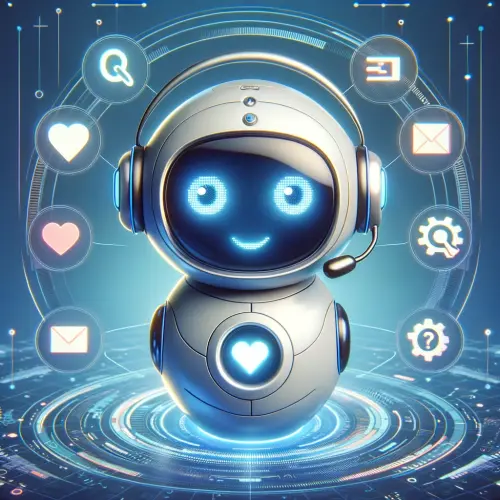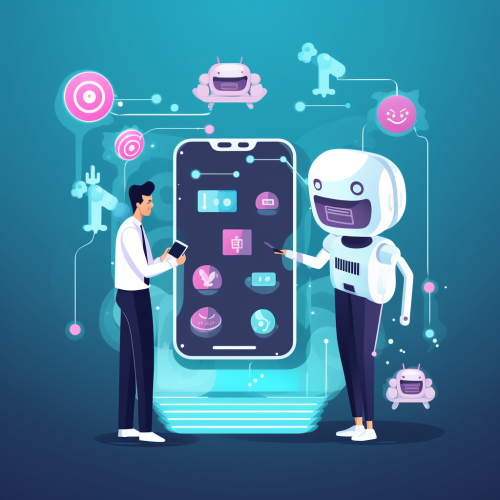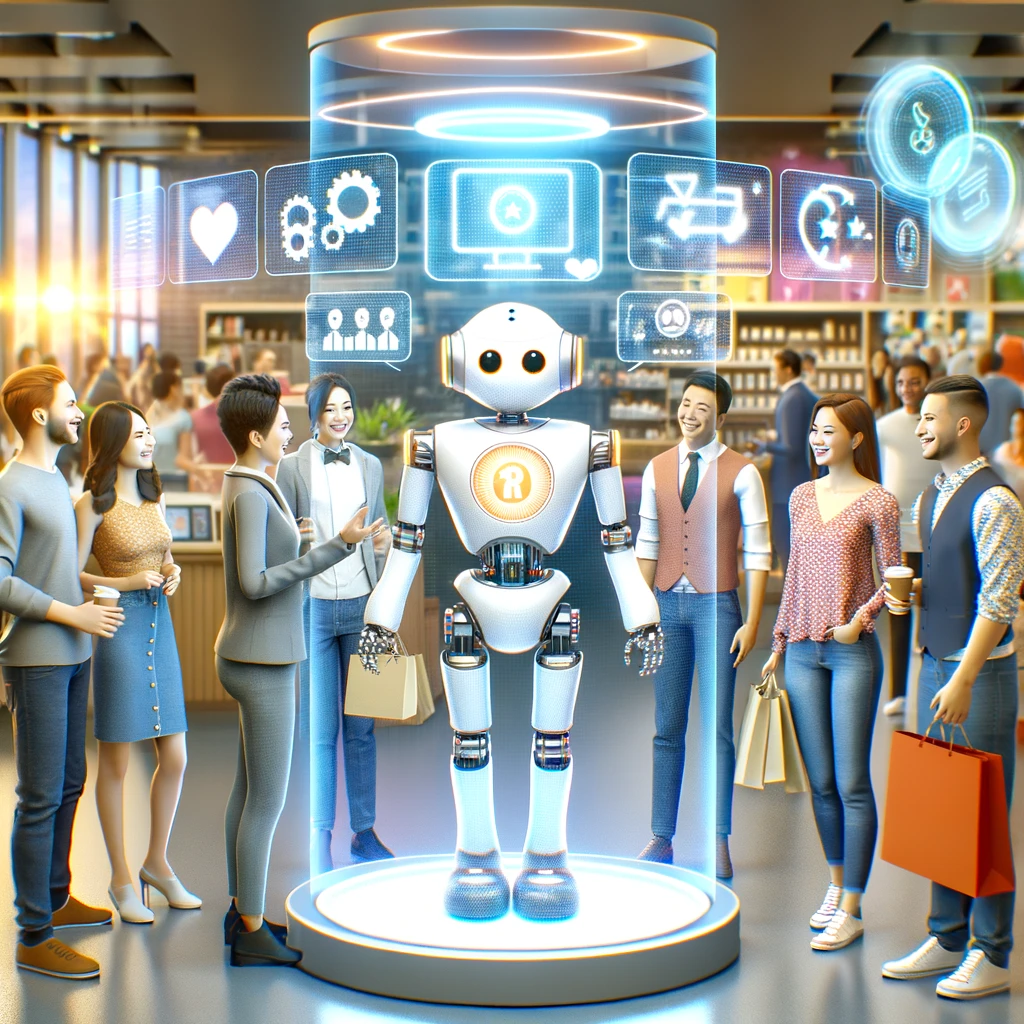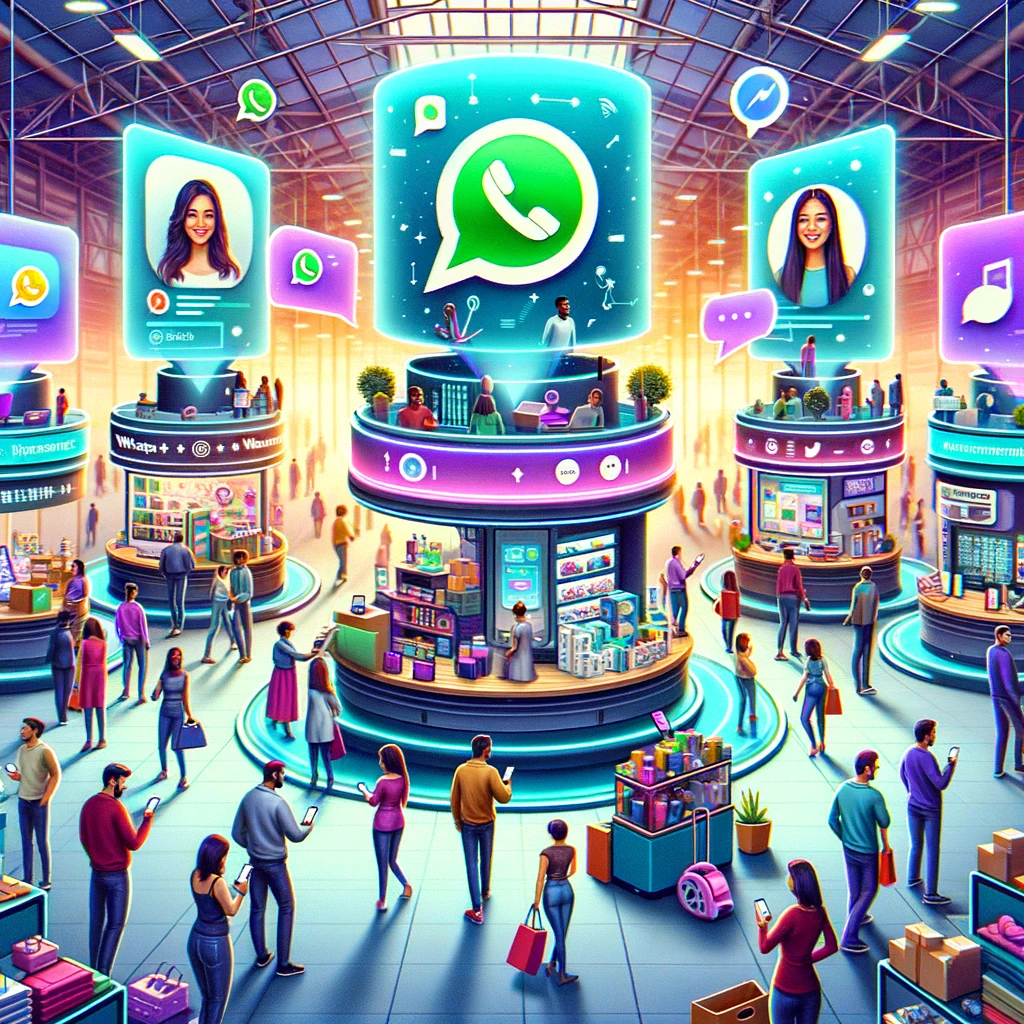AI's Impact on Communication: The Revolutionary Role of Chatbots
Introduction
Artificial Intelligence (AI) chatbots have become an integral part of digital communication, seamlessly integrating into various platforms where instant messaging, web search, and customer service play a pivotal role. These sophisticated software applications mimic human conversation through text or voice interactions, enabling an efficient and scalable approach to communication that businesses and consumers alike have come to rely on. The broader concept of AI in communication encompasses these chatbots and extends to enhancing crisis management, audience engagement, and personalized content delivery.
Definition of AI Chatbots and Their Primary Functions
AI chatbots are programmed to simulate interactive human conversations using key technologies like natural language processing (NLP) and machine learning (ML). Unlike their simpler predecessors, which could only respond to specific commands, AI chatbots understand and process natural language, allowing them to interpret and respond to a wide range of user queries. A conversational AI chatbot, such as ChatGPT or Copilot, utilizes advanced AI models like GPT-4 to engage in real-time conversations, provide quick and efficient responses, understand complex conversations, and offer personalized recommendations. Their primary functions revolve around providing a customer experience and support, delivering information, facilitating transactions, and offering personalized recommendations, all in a manner that is both engaging and human-like. This exemplifies the transformative potential of AI-powered communication, enhancing accessibility, efficiency, and personalization in interactions.
Historical Context and Evolution of Chatbots into AI-Driven Entities
The concept of a machine capable of carrying out conversations with humans dates back to the mid-20th century, with the most notable early example being ELIZA, developed in the mid-1960s. ELIZA was a rudimentary program that mimicked a psychotherapist by rephrasing many of the user’s statements as questions. While ELIZA and similar programs laid the groundwork, they could not learn from interactions or understand language beyond a scripted set of inputs.
The evolution of chatbots into AI-driven entities began in earnest with the advent of more sophisticated AI technologies. The introduction of machine learning and natural language processing allowed chatbots to learn from past interactions, improve their understanding over time, and manage a far more complex array of conversational scenarios. AI systems have further enhanced these capabilities by providing functionalities like smart replies and improved emotional tone, though they also bring potential challenges such as misunderstandings and a loss of personal expression in language. This transformation was further accelerated by the increased computational power and the vast amounts of data available for training AI models, leading to the highly capable AI chatbots we see today.
From simple scripted bots to advanced AI-driven virtual assistants capable of sustaining nuanced conversations, chatbots have undergone a significant transformation. Today, conversational AI chatbots are not just a novelty but a necessary tool in the digital communication landscape, providing immediate, 24/7 assistance and enhancing the user experience across numerous platforms and industries.
What are the 4 Types of Virtual Assistants?
The realm of chatbots is diverse, with various types designed to fulfill different roles and functions. Understanding these types can help businesses and users select the most suitable chatbot for their needs. Here are the four primary types of chatbots:
1. Menu/Button-Based Chatbots: These are the simplest form of chatbots, navigating the user through a conversation using predefined options and buttons. The user selects from available choices, making interactions straightforward but limited. These chatbots are excellent for basic customer service tasks, such as answering FAQs or guiding users through a website.
2. Script-Driven Chatbots: Script-driven chatbots operate on a set of predetermined rules and scripts. They are more sophisticated than menu-based bots, capable of parsing and responding to specific user inputs with pre-scripted responses. This type can handle a wider range of queries but is still limited to its programmed knowledge and cannot handle complex queries or unexpected questions well.
3. Artificial Intelligence (AI) Chatbots: AI chatbots represent a significant leap forward, utilizing natural language processing (NLP) and machine learning (ML) to understand and respond to user queries in a more human-like manner. These chatbots learn from interactions, improving their responses over time. They can handle complex conversations, understand context, and provide personalized experiences.
4. Message Bots: Often referred to as messaging bots, these chatbots live within popular messaging platforms like WhatsApp, Facebook Messenger, and Telegram. They can range from simple menu/button-based bots to advanced AI-driven bots, providing services directly within the messaging app environment. This accessibility makes them highly effective for engaging users in a familiar setting.
How AI Chatbots Work
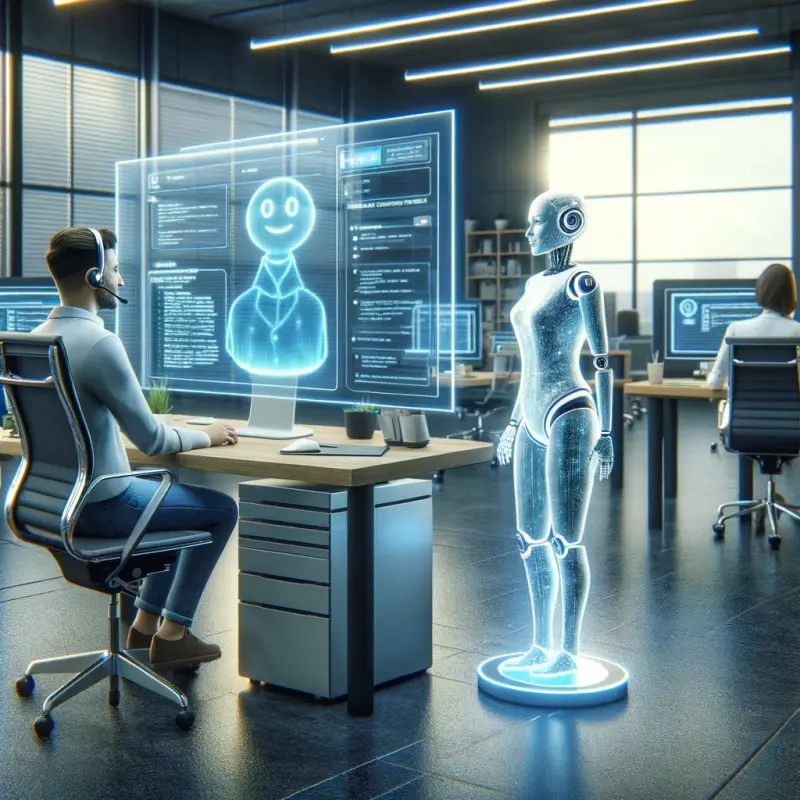
AI-powered tools, such as chatbots, represent a significant leap forward in the field of conversational AI, offering a level of interaction that is remarkably human-like. This is achieved through a combination of advanced technologies, including natural language processing (NLP) and machine learning (ML), which form the core of how AI chatbots understand, learn, and respond to human input.
Explanation of the Underlying Technology Behind AI Chatbots, Including Natural Language Processing
Natural Language Processing (NLP): NLP allows chatbots to analyze and understand human language, breaking down sentences into understandable components to grasp the user’s intent. This understanding, combined with data analysis, enables the chatbot to construct responses that are relevant and coherent.
- Machine Learning (ML): ML enables chatbots to learn from data. By analyzing patterns in vast datasets of conversations, chatbots learn to predict the most appropriate response to a given input. Over time, as they are exposed to more interactions, their responses become more accurate and human-like.
Overview of the Development Process of AI Chatbots, Including Training and Implementation
Developing an AI chatbot involves several key features" stages:
1. Defining Objectives: Determining what the chatbot is supposed to achieve, automating tasks such as customer service, sales support, or providing information.
2. Data Collection and Preparation: Gathering and preparing conversation datasets to train the chatbot. This often involves collecting real dialogues from customer conversations, scripting possible interactions with previous conversations, and annotating data to teach the chatbot how to interpret different types of queries.
3. Training the Model: Using the prepared datasets to train the chatbot platform's AI model. This stage involves using training data to generate text, selecting algorithms, training the model to understand and generate language, and continuously testing and refining its performance.
4. Integration and Implementation: Once trained, the chatbot software is integrated into its target platform, whether it's a website, mobile app, or social media platform. This step also involves setting up the necessary infrastructure for the chatbot software to access relevant data and perform its tasks.
5. Monitoring and Maintenance: After the deployment of the AI assistant, continuous monitoring is essential to identify and correct any issues. Further training may be required to improve the chatbot platform's understanding and response capabilities based on user feedback and new data.
Case Studies or Examples of Different Types of AI Chatbots in Action
Customer Service Chatbots: Many companies use AI chatbots for customer service, such as the chatbot used by a major airline to handle booking inquiries and flight changes. This chatbot platform can understand complex customer queries about flight options, pricing, and policies, providing immediate assistance without the need for human intervention.

Healthcare Assistants:AI chatbots in healthcare can triage patient inquiries, provide health information, and even monitor patient conditions. For example, a mental health chatbot uses NLP to offer conversational support, helping users manage anxiety and depression through guided conversations.
E-commerce Personal Shoppers:E-commerce platforms leverage AI chatbots to offer personalized shopping experiences. These chatbots can recommend products based on the customer’s preferences and past purchases, answer questions about products, and even assist customers with the checkout process.
Each of these examples illustrates the diverse applications of AI chatbots across different sectors, showcasing their ability to understand and respond to a wide range of human needs and behaviors. Through continuous development and refinement, AI chatbots are becoming an increasingly sophisticated and integral part of our digital lives. Additionally, AI-driven automation enhances the efficiency of communication teams by reducing operational costs and minimizing errors, which is particularly beneficial in crisis management scenarios.
Benefits of AI Chatbots
The integration of AI chatbots into digital platforms has brought about a revolution in how businesses interact with their customers, offering a range of benefits that extend well beyond simple convenience. These benefits include enhanced efficiency and accessibility across messaging channels, remarkable scalability, and the ability to provide personalized customer experiences throughout the customer experience.
Efficiency and Accessibility: Providing 24/7 Support and Reducing Waiting Times for Users
One of the most significant advantages of AI chatbots is their ability to offer round-the-clock support. Unlike human operators, chatbots do not require breaks or sleep, making them available to answer questions, resolve issues, and provide assistance at any time of day. This continuous availability ensures that users can receive immediate help whenever they need it, significantly reducing waiting times and improving the overall user experience. This level of efficiency and accessibility is particularly beneficial in today’s fast-paced world, where consumers expect instant responses and swift solutions. Additionally, AI chatbots can overcome language barriers by instantly translating and interpreting multiple languages, thus enhancing communication for non-English speakers.
Scalability: The Ability to Handle a Vast Number of Interactions Simultaneously
AI chatbots can manage thousands of conversations at once, something that would be impossible for a human customer service team to achieve. This scalability makes chatbots an invaluable asset for businesses experiencing rapid growth or those with large customer bases. They can easily adjust to fluctuating volumes of customer inquiries, questions, and inquiries, without the need for scaling up human resources, ensuring that every customer receives timely attention. This capability not only helps in managing customer interactions efficiently but also significantly reduces the costs associated with customer service operations, allowing employees to focus on more complex tasks.
Personalization Communication: Offering Tailored Responses and Recommendations Based on User Data and Interactions
Through the use of machine learning algorithms, AI chatbots can analyze individual user data and previous interactions to deliver highly personalized communication and experiences. By understanding a user’s preferences, purchase history, and behavior, chatbots can recommend products, services, or content that is most relevant to the individual. This level of personalization enhances the user experience, fosters customer loyalty, and can even drive sales by providing targeted recommendations that meet the user’s needs and interests. Personalization also makes interactions feel more human and engaging, as users receive responses and suggestions that are tailored specifically to them.
In conclusion, the benefits of AI chatbots extend far beyond mere convenience. They transform digital communication by making it more efficient, scalable, and personalized. As technology continues to evolve, the potential of AI chatbots to enhance digital experiences becomes increasingly significant, promising even greater advancements in how businesses interact with their customers.
The Future of AI Chatbots
The landscape of AI chatbots is rapidly evolving, driven by continuous advancements in technology and a deeper understanding of human-computer interaction. As we look to the future, several key trends and potential applications hint at an even more integrated and intuitive role for AI chatbots across various sectors of society.
Emerging Trends in AI Chatbot Development
Advancements in Natural Language Understanding (NLU): Future AI chatbots are expected to exhibit a profound leap in natural language understanding, going beyond parsing user input to grasping the nuances of human communication, with key features including context, tone, and emotion. This will enable chatbots to engage in more meaningful and natural conversations, further blurring the lines between human and machine interaction. Additionally, businesses are increasingly building their own chatbots using advanced AI models like OpenAI GPT-3.5 or GPT-4, allowing for customization, training, and personalization to meet specific needs.
Emotional AI and Sentiment Analysis: The integration of emotional AI, or affective computing, into chatbot technology, will allow these digital virtual assistants to recognize and respond to the emotional states of users. By analyzing voice inflections, text patterns, language models, and other cues, chatbots will tailor their responses not just to the content of the message, but also to the context window of the user’s emotional context, offering a more empathetic and supportive interaction experience. Particularly, smart replies designed to convey positive sentiment can enhance the emotional content of the dialogue, leading to increased perceptions of cooperativeness and affiliation among participants. This emphasizes the role of positive sentiment in shaping interpersonal dynamics during AI-mediated communication.
Potential Future Applications in New Industries and Sectors
As AI chatbots become more advanced, their potential applications will expand into new industries and sectors, some of which include:
Mental Health Support: AI chatbots could provide preliminary mental health support, offering a first line of assistance for those seeking help, guidance, or someone to talk to, thereby reducing the stigma associated with seeking mental health services. However, it is crucial to consider the impact of negative smart replies in this context, as they could potentially exacerbate negative emotions and hinder the effectiveness of the support provided.
Education and Lifelong Learning: Chatbots could become personalized tutors, adapting to each student’s learning pace, style, and preferences, thereby enhancing the educational experience and making learning more accessible to diverse populations.
Public Services and Governance: Government agencies could use AI chatbots to streamline the delivery of public services, from processing paperwork to providing citizens with easy access to information, thereby improving efficiency and citizen satisfaction.
The Ongoing Role of Human Oversight in the Development and Use of AI Chatbots
Despite the strides in automation and AI, the role of human oversight remains crucial in the development and deployment of AI chatbots. Human intervention is necessary to ensure ethical considerations are addressed, biases are minimized, and chatbots are aligned with societal norms and values. Additionally, human oversight is essential in scenarios where empathy, creativity, and complex decision-making are required, ensuring that chatbots complement rather than replace human capabilities. This is particularly important when considering the suggested responses generated by AI, as these can significantly influence conversation dynamics and participant perceptions.
Moreover, as AI chatbots become more integrated into our daily lives, the importance of transparency, privacy, and security becomes paramount. Developers and businesses must work to build trust with users by ensuring that chatbots handle data responsibly and that users understand how their information is being used.
In conclusion, the future of AI chatbots promises an exciting convergence of technology, human agents, empathy, and innovation. As we navigate the challenges and opportunities that lie ahead, the synergy between our human agents’ insight and AI capabilities will be key to unlocking the full potential of chatbots in transforming our digital world.
Conclusion
The journey through the evolution, functionality, and prospects of AI chatbots reveals a transformative shift in digital communication. These intelligent systems, powered by advancements in natural language processing and machine and deep learning capabilities, have transcended their initial programming to become vital components of our digital ecosystem. They offer 24/7 support, unparalleled scalability, and personalized interactions, enhancing the way businesses and consumers communicate.
The role of AI chatbots in digital communication is not just a tale of technological triumph but also a testament to the potential for technology to enrich human interaction. They have bridged the gap between efficiency and personalization, ensuring that users receive timely, relevant, accurate answers, and context-aware responses. This transformation of conversational experience has paved the way for AI chatbots to extend their influence beyond customer service, venturing into mental health, education, and even governance, promising a future where AI-supported communication is the norm.
However, this journey also prompts reflection on the delicate balance between technological advancement and ethical considerations. As AI chatbots become more embedded in our daily lives, issues of privacy, data security, and the potential for bias underscore the importance of human oversight. The development and deployment of AI chatbots must be guided by ethical frameworks that prioritize the well-being and rights of individuals, ensuring that these technologies serve to enhance rather than diminish the quality of human interaction.
Looking to the future, the trajectory of AI chatbots is set to redefine the boundaries of what is possible in digital communication. With advancements in emotional AI and natural language understanding, chatbots are on the cusp of offering interactions that are not only efficient and personalized but also empathetic and nuanced. This evolution promises to reshape our digital landscape, making technology an even more integral and human-like part of our daily interactions.
As we venture further into this digital age, the potential of AI chatbots to transform communication is clear. However, the true measure of their success will lie in our ability to harness these advancements responsibly, ensuring that as we move forward, we do so with a commitment to enhancing human connection in a way that is ethical, secure, and inclusive.
FAQ: AI Chatbots in Digital Communication
Q1: What is an AI chatbot?
A1: An AI chatbot is a software application that uses artificial intelligence, particularly natural language processing (NLP) and machine learning (ML), to simulate human-like conversation. Chatbots are designed to interact with humans through text or voice interfaces, understanding and responding to queries naturally and intuitively.
Q2: How do AI chatbots understand human language?
A2: AI chatbots understand human language through natural language processing (NLP), a branch of artificial intelligence. NLP allows chatbots to analyze and interpret the user's input, have language models understand context, and determine the most appropriate response based on human-like responses and on learned patterns and data.
Q3: Can AI chatbots learn from interactions?
A3: Yes, AI chatbots can learn from interactions using machine learning algorithms. As they are exposed to more conversations, they analyze the data to improve their responses, making them more accurate and personalized over time.
Q4: What are some common uses of AI chatbots?
A4: AI chatbots are commonly used for customer service and support, providing personalized shopping experiences in e-commerce, assisting with healthcare management, and serving as learning assistants in education. Their applications are expanding into various industries due to their efficiency and versatility.
Q5: What are the benefits of using AI chatbots?
A5: The benefits and key advantages of AI chatbots include providing 24/7 support, reducing waiting times for users, handling a vast number of user interactions simultaneously (scalability), and offering personalized responses and recommendations based on user data and interactions.
Q6: What challenges do AI chatbots face?
A6: Challenges include ensuring privacy and data security, improving the accuracy and reliability of business data, and addressing ethical concerns such as biases in AI. Continuous development and human oversight are essential to address these challenges effectively.
Q7: How will AI chatbots evolve in the future?
A7: AI chatbots are expected to become more advanced in natural language understanding and emotional AI, enabling them to better grasp the nuances of human communication and respond to emotional cues. Their applications will expand into new sectors, and human oversight will continue to play a crucial role in their development and use.
Q8: How do ethical considerations impact AI chatbot development?
A8: Ethical considerations are vital to ensure that AI chatbots are developed and used responsibly. Issues such as data privacy, security, and avoiding biases are central to ethical AI chatbot development. Developers must prioritize these considerations to maintain trust and ensure the technology benefits society as a whole.
Q9: Can AI chatbots replace human customer service representatives?
A9: While AI chatbots and virtual agents can handle many aspects of customer service, they are not likely to completely replace human representatives. Humans are still needed for complex problem-solving, empathy, and scenarios requiring deep contextual understanding and nuance. Chatbots and virtual agents are best seen as complementary tools that enhance efficiency, customer engagement, and service quality.
Q10: Are AI chatbots secure?
A10: The security of AI chatbots depends on the measures taken during their development and deployment. Developers must incorporate robust security protocols, including data encryption and compliance with privacy laws, to protect user information and conversations. Ongoing monitoring and updates are also necessary to maintain security standards.

